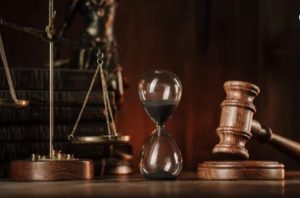Introduction
The Plaintiff no.1 is the industry leader in rail fastenings and track elasticity solutions headquartered in the United Kingdom. The plaintiff no.2 is a joint venture between the plaintiff no.1 and Rahee Industries Ltd. The defendant no.1 is a company in the business of dealing in railway track engineering. Defendants no.2 to 5 are employees of the defendant no.1. The plaintiff no.1 holds registrations dating as far back as 1964 for its trademark ‘PANDROL’. The plaintiffs have designed, developed and created detailed drawings for their ‘DBRAS’ and is the copyrighted work of the plaintiff no.1. Plaintiff no.2 is the exclusive license holders of the drawings of the plaintiff no.1to use the said drawings in the course of their business in India. The drawing is manufactured and supplied in India as well as exported outside the country by the plaintiff no.2. , the plaintiffs have gained reputation and goodwill under the ‘PANDROL’ mark. The defendants have infringed the copyrighted work of the plaintiff no.1 by copying the drawings of the plaintiff no.1 and submitting the same to the Madhya Pradesh Metro Rail Corporation Limited and have also infringed the trademark ‘PANDROL’ by submitting the impugned drawings under the said mark. The suit has been filed seeking a decree of permanent injunction along with other ancillary reliefs.
Contention of the Parties
The Plaintiffs: The defendants have infringed the copyright and trademark ‘PANDROL’ of the plaintiff by copying the drawings of the plaintiffs. The plaintiffs’ product was not the specific subject of the tender; rather, it was a generic product. For the following reasons, the plaintiffs’ drawings do not fall within the definition of “design” as stated in Section 2(d) of the Designs Act, 2000: i. The plaintiffs’ drawings qualify as “artistic work” under Section 2(c) of the Copyright Act, 1957. ii. The plaintiffs’ drawings depict a fastening system’s construction method, which is expressly excluded from the definition of “design” as stated in Section 2(d) of the Designs Act. iii. No visual appeal is present of the drawings. The drawings of the plaintiffs do not constitute a design, which is capable of being registered under the Designs Act, 2000.
[Image Sources : Shutterstock]
The Defendant: The “Double Resilient Base Plate System” drawings are in accordance with the specifications provided by the MPMRCL and with the recommendations made by the Ministry of Railways. A total of six fastening systems for ballastless tracks have received approval from the Ministry of Railways. The mere approval of a fastening does not grant the company that created and designed the system any legal rights. Therefore, the design cannot be said to be registered under Patents Act 1970 or the Copyright Act, 1950 or in the Designs Act, 2000. The drawings of Plaintiff No. 1 are in the public domain and are easily accessible online as well as on the Ministry of Railways’ official website. According to Section 15 of the Copyright Act of 1957 when read with the Designs Act of 2000, there is no copyright in the plaintiff’s drawings. When the drawings were being converted from PDF files to AutoCAD files, the trademark was inadvertently left on them. Since 2010, the plaintiffs’ drawing have been in the public domain. Plaintiffs do not have any copyright over their drawings within the meaning of Section 14 of the Copyright Act, 1957. The plaintiffs have already supplied more than 21,00,000 fastening sets and 50,00,000 elastic rail clips therefore, no copyright subsists in the drawings of the plaintiffs as per Section 15(2) of the Copyright Act, 1957. It could be said that the plaintiffs’ drawings shall qualify as a design that can be registered under the Designs Act of 2000. In light of Section 15(2) of the Copyright Act of 1957, the plaintiffs shall not assert any copyright rights in the aforementioned drawings.
Analysis
The court decision is in favor of the plaintiff. The court held that the defendants have dishonestly copied the drawings in respect of which the copyright vests solely with the plaintiffs. The present application filed on behalf of the plaintiffs under Order XXXIX Rules 1 and 2 of the CPC is allowed with costs of Rs.1,00,000/- imposed on the defendant. If the contention of the defendants is upheld, then it would be open for any person to copy the work of another and exploit the efforts of the original author. Registration is not a requirement in seeking protection from infringement under the Copyright Act. The extent of copying by the defendants is not confined just to the drawings of the plaintiffs but goes on to include the unique numbering given to the said drawings by the plaintiffs and have also copied the mark ‘PANDROL’ of the plaintiffs in some of the drawings. The drawings are not capable of being registered as designs under the Designs Act and thus there is no question of applicability of Section. 15(2) of the Copyright Act.
Author: : Parinita Gupta, in case of any queries please contact/write back to us via email to chhavi@khuranaandkhurana.com or at Khurana & Khurana, Advocates and IP Attorney.




